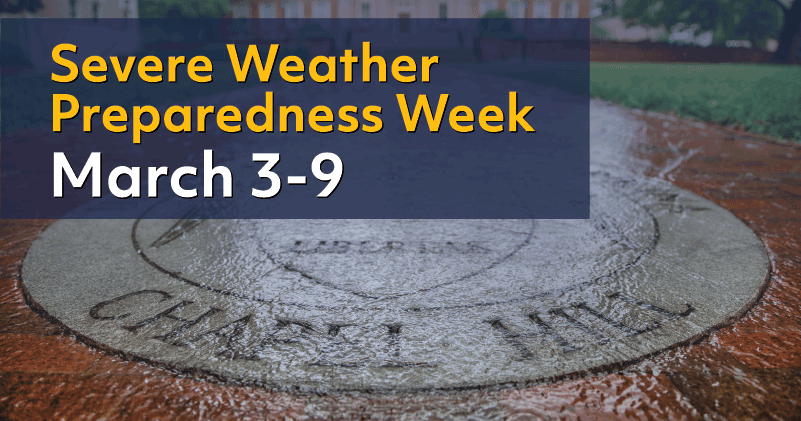
Topics
Flash flooding in North Carolina usually occurs when a large amount of rain falls in an area over a short period of time. The ground can only soak up so much water in a given time, and when the rain rate exceeds what can infiltrate into the ground or run off into drainage systems or streams, flooding is likely to occur. Hurricanes, tropical storms and ordinary thunderstorms can produce flash flooding.
More people die from floods each year than from tornadoes, lightning or hurricanes. Forecasters can usually predict where flooding will occur when a hurricane or tropical storm affects an area. However, when dealing with thunderstorms, predicting flash floods can be nearly impossible due to their isolated nature. Flash floods usually occur in low-lying areas where water can collect or in cities where water runoff from impermeable surfaces can fill roads or storm drains quickly.
Remember these flash flood safety tips:
- If a flash flood warning is issued for your area, or if there is any possibility of a flash flood, move immediately to higher ground. Do not wait for instructions to move.
- Do not walk through moving water. Six inches of moving water can make you fall.
- Do not drive into flooded areas. If floodwaters rise around your car, abandon the car and move to higher ground, when water is not moving or not more than a few inches deep. You and the vehicle can be swept away quickly. If your vehicle is trapped in rapidly moving water, stay in the vehicle. If the water is rising inside the vehicle, seek refuge on the roof.
- Do not disregard or drive around traffic barricades that close off flooded roadways.
- Do not camp or park your vehicle along streams, rivers or creeks, particularly during threatening conditions.
During a flood, water levels and the rate at which water is flowing can quickly change. You are safest by staying indoors, or seeking higher ground if shelter isn’t available. If you’re stuck outside when a flash flood occurs, do not attempt to cross flood waters by vehicle or on foot.
Most flood fatalities occur in vehicles, and it only takes 12 inches of water to sweep a car away. Sometimes the difference between life and death are small decisions. Small decisions like turning around and not driving through a flooded roadway, not driving around barricades, and delaying travel until conditions improve, can make a big impact on whether you keep your car…or even your life. Turn Around, Don’t Drown.
